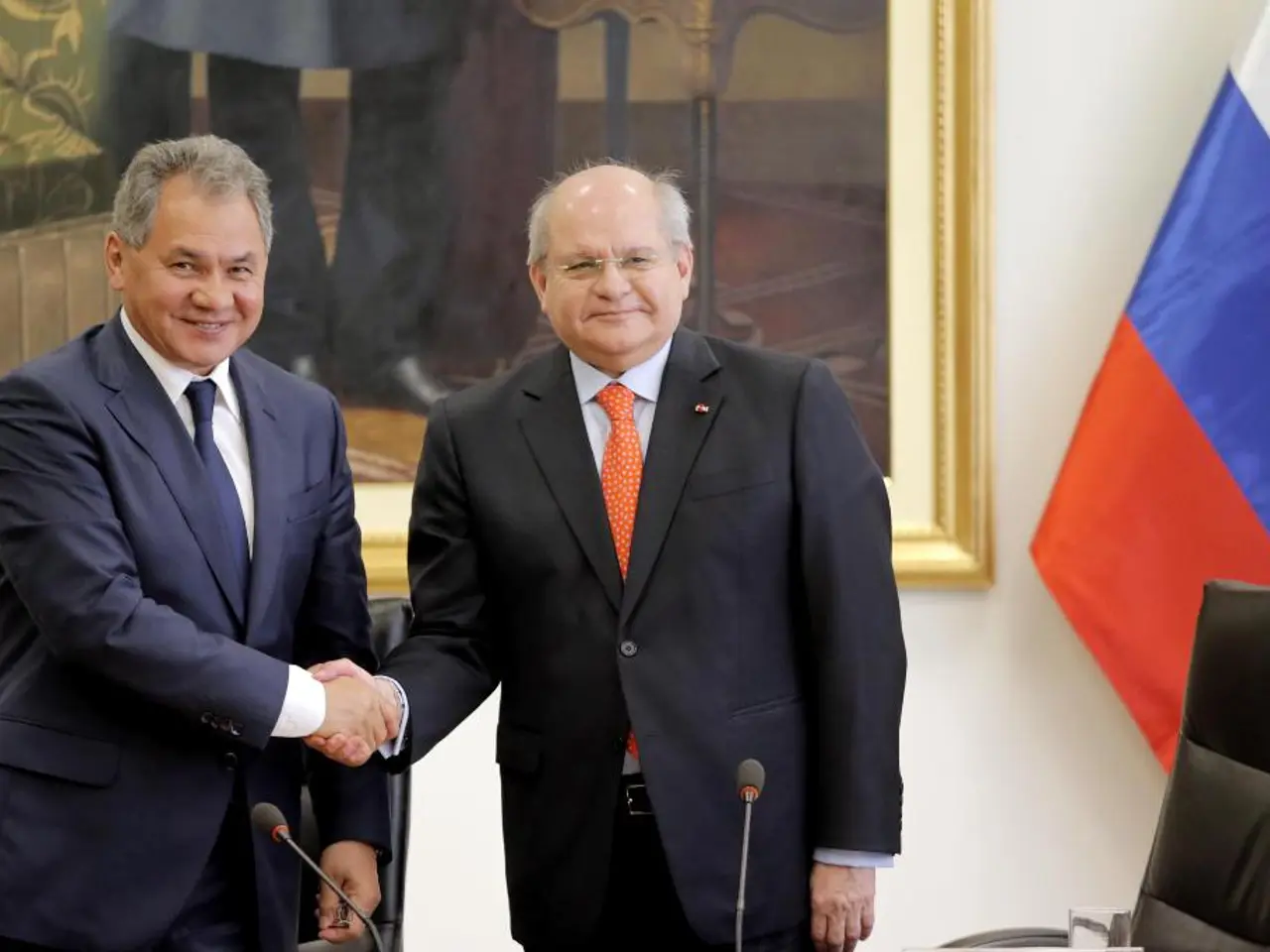Trump condemns ex-Russian president Medvedev, urging caution in regard to war claims
In the ongoing conflict between Ukraine and Russia, diplomatic efforts have taken centre stage as U.S. President Donald Trump seeks a peaceful resolution. However, these efforts have been met with mixed signals, and underlying tensions remain high.
Diplomatic Engagements
Trump held a three-hour summit with Russian President Vladimir Putin in Alaska on August 15, aiming to broker a peace deal for Ukraine. This was followed by talks in Washington with Ukrainian President Volodymyr Zelenskyy and European leaders, signalling a push towards a trilateral summit to end the war. Trump stated that some headway was made, and notably, Putin agreed in principle to allow U.S. and European allies to offer "Article-5 like" security guarantees to Ukraine, a significant development.
Contrasting Views on Progress
Despite diplomatic openings, Russia maintains maximalist war aims publicly. Russian officials have used the summit for rhetorical campaigns to undermine Ukraine’s sovereignty and delegate peace negotiation influence away from Ukraine and the EU. This rhetoric signals that Russia is not ready for substantial compromise.
U.S. and Allied Responses
Experts and analysts view the Alaska summit as largely symbolic, with no immediate cessation of hostilities expected. They note Russia’s fundamental war aims remain eliminationist, and that the conflict will likely be decided on the battlefield. Continued U.S. and allied support for Ukraine, including military aid and sanctions on Russia, remain key strategies.
Escalations
While diplomatic meetings represent a step towards dialogue—unprecedented high-level direct talks between U.S. and Russian leaders since the war began—they have not eased underlying tensions. Russia’s rhetorical positioning and insistence on no unconditional ceasefire coupled with ongoing hostilities keep the conflict active. The U.S. simultaneously pushes for peace negotiations with security guarantees to Ukraine, while maintaining sanctions and military support, reflecting a dual approach of pressure and diplomacy.
Trump's Statements
Trump has called for a peace agreement to be made between Russia and Ukraine, or face economic punishment. His statements indicate a strain in U.S.-Russia relations, with Trump warning Russia's former president Dmitry Medvedev that he risks entering "dangerous territory." Trump's tariffs on India are a response to unspecified actions by India, and among the highest in the world, according to his statement.
Medvedev's Statements
Medvedev, Russia's Security Council deputy chairman, claimed that the two superpowers were heading towards a war of their own if the U.S. commander in chief continued his push to end the war. He criticized the US deadline for a cease-fire in Ukraine as "a step towards war." Medvedev also stated that Russia isn't comparable to Israel or Iran.
These statements were made at different times, with Trump's being on Truth Social and in an interview with The Post's Miranda Devine, and Medvedev's on July 28.
Trump originally gave Russia a 50-day target time on July 14, but later announced a push-up of the deadline, setting a new target of 10 to 12 days. Despite multiple conversations with his Russian counterpart, these conversations have not led to desired outcomes.
In essence, the recent escalation is characterized by cautious diplomatic attempts from the U.S. to seek peace, Russia’s continued ideological maximalism and rejection of unconditional ceasefire, and ongoing war rhetoric and ground fighting, sustaining high tensions between Washington and Moscow over Ukraine.
- The business of securing a peaceful resolution between Ukraine and Russia, amid ongoing war-and-conflicts, has been at the forefront of global news, with U.S. President Donald Trump engaging in diplomatic efforts and even holding a summit with Russian President Vladimir Putin.
- The world of politics is witnessing contrasting views on the progress of the Ukraine-Russia conflict, as Russia maintains its maximalist war aims while the U.S. continues to push for peace negotiations and maintains sanctions against Russia.





